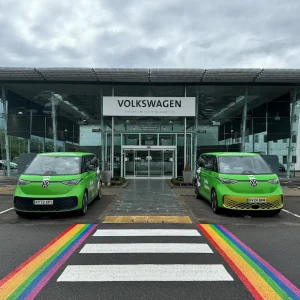What started out in September 2006 as a controversial scheme virtually reduced to mockery begins 2008 with the BusinessCar Environment Award.
The active traffic management trial between junctions 3A and 7 on the M42 included the revolutionary idea of allowing hard-shoulder running to help ease congestion. Initially criticised as a dangerous plan by those that hadn’t taken the time to read up on how the scheme would work, the Highways Agency eventually reported enough success to warrant extending the scheme to the motorway network that boxes Birmingham.
Decreasing congestion on the motorway has contributed to emissions drops of up to 10% thanks to cars no longer accelerating and decelerating in heavy traffic. The increased capacity, combined with speed limit controls, saw average journey times drop by more than a quarter, and those early criticisms about the problems of cars driving on the hard shoulder in the case of emergencies were quickly dispelled.
CCTV cameras monitor the motorway, and hard-shoulder running is only allowed when the variable speed limit drops to 50mph, and then only for traffic entering or exiting the motorway, to keep those vehicles out of the main carriageway.
“The M42 trial shows that using innovative thinking to help drivers beat motorway jams really works,” said transport secretary Ruth Kelly. “The first six months of the full M42 trial saw significant benefits for motorists, the environment and the economy.”
Having sampled the system first-hand during the rush-hour, BusinessCar was impressed with the simplicity and effectiveness of a system that does, admittedly, sound more complex and worrying on paper. We think it works, and it appears you do too, helping to cut congestion and therefore emissions and economy and making business drivers’ lives easier. The Highways Agency is looking into further extending its traffic management to other stretches of motorway and, if it works as well as the M42, then we say the sooner the better.





